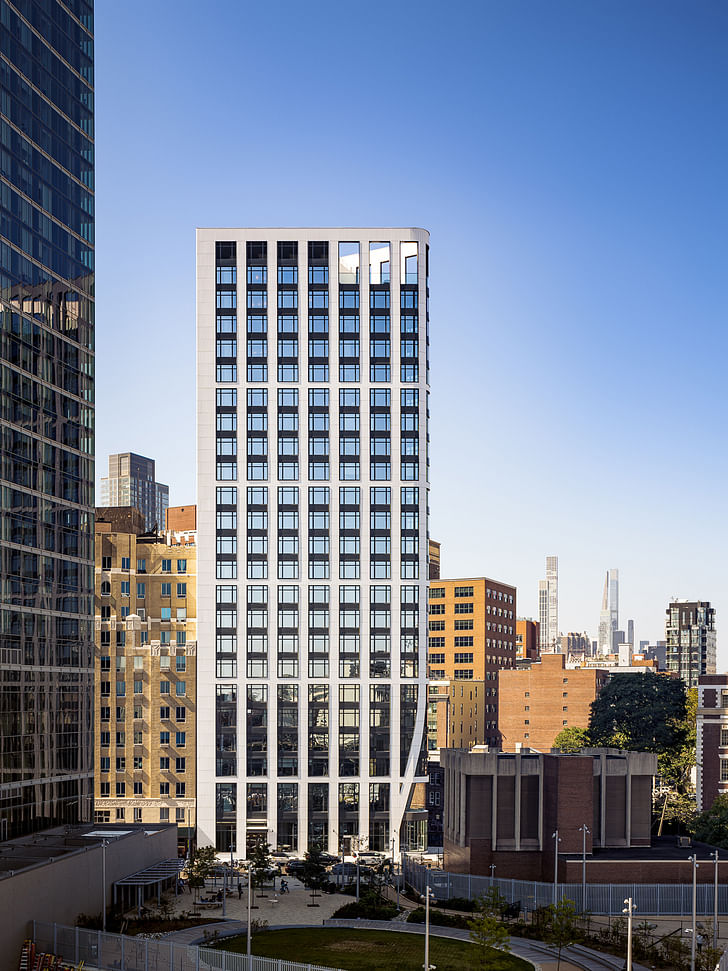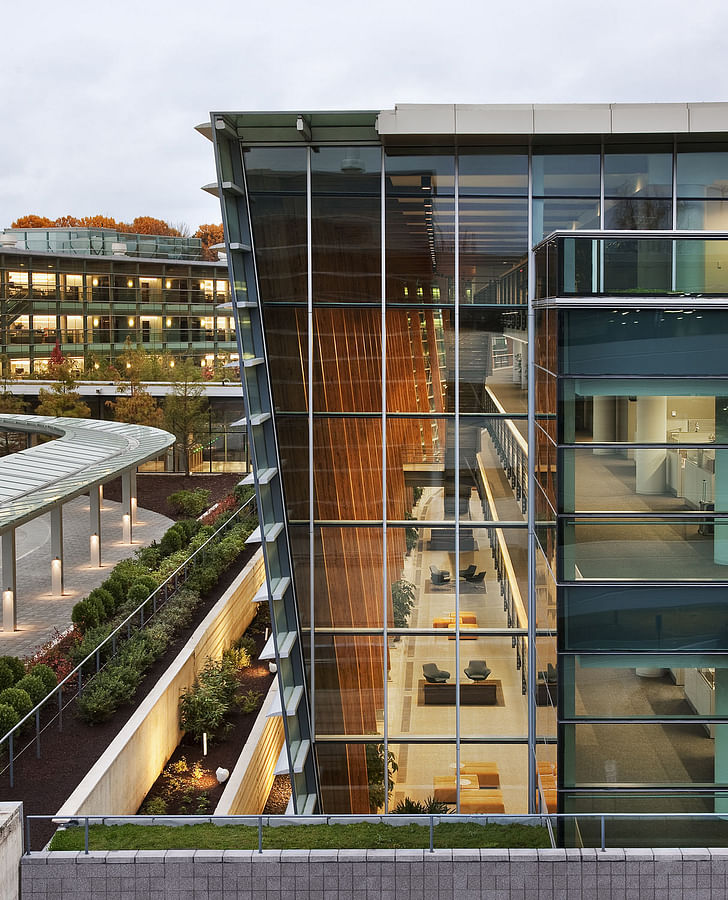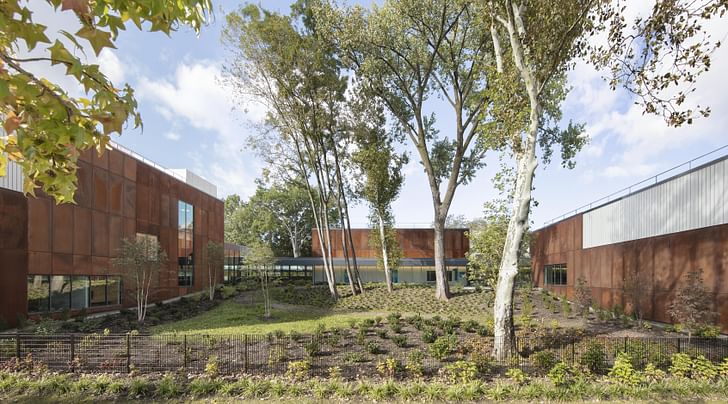

With the U.S. Federal Reserve embarking on rounds of target interest rate cuts in late 2024, AEC industry commentators are forecasting that architectural business conditions may improve in the coming months. Architecture firms experiencing an increased workload may, therefore, find themselves asking the deceptively simple question: When should I start hiring?
Should hiring decisions be made in response to secure work or more speculative projections? Should onboarding time be taken into account? Are there economic considerations beyond workload projects that should be factored in?
In search of answers, Archinect spoke with four firms about their hiring strategies: Fogarty Finger, FXCollaborative, Marmol Radziner, and Marvel. From our conversations, five key factors emerged for firms to consider when designing their own hiring strategies.
“That’s the million-dollar question,” Fogarty Finger Director and CFO Stella Um told me recently on when the best time to hire new talent is. Given the cyclical nature of the AEC sector, explained in detail by AIA Chief Economist Kermit Baker in a 2022 Archinect feature, architecture firms typically flow between being oversupplied with staff and being undersupplied. “It’s a chronic issue, and there isn’t a silver bullet answer,” Baker told me at the time.
Two years later, as the U.S. Federal Reserve embarks on rounds of interest rate target cuts, there is an expectation among some commentators that the U.S. architecture profession will see an increase in demand for services in the coming months. Former HOK CEO Patrick MacLeamy recently told me that such rate cuts may take six months to ripple through the industry, while Dodge Construction Network forecasting lead Sarah Martin was quoted in our latest State of AEC briefing that nonresidential activity should see increased activity levels by the middle of 2025.
When such a recovery takes hold, more architecture firms will find themselves asking a deceptively simple question: When should I start hiring? Should hiring decisions be made in response to secure work or more speculative projections? Should onboarding time be taken into account? Are there economic considerations beyond workload projects that should be factored in?
In pursuit of answers, Archinect asked four architecture firms for their thoughts, experience, and advice on the topic. From our conversations, five key factors emerged for firms to consider when designing their own hiring strategies.

“Most of the time, we look to fill specific positions when we have an imminent need,” Marmol Radziner Design Principal Stephanie Hobbs told me. “This could be because we have an upcoming project that we can’t staff from within the office, or someone is leaving, and we need to fill their position. Our goal is always to hire for the long term, and we factor this into our conversations about future staffing.”
For Lissa So and Annya Ramirez, both Partners at Marvel, the decision over when to hire can likewise be a function of immediate needs in the office, while mitigating the risk that projected workloads do not materialize. “It is not surprising that optimal hiring is often when the firm enters a new cycle of projects and can develop existing staff and bring in new talent to forge a strong team,” So and Ramirez told me. “Knowing that things are always unpredictable, hiring requires reading into the future and a bit of luck.”
Our goal is always to hire for the long term, and we factor this into our conversations about future staffing. — Stephanie Hobbs, Marmol Radziner
At Fogarty Finger, meanwhile, hiring in response to projected workloads includes monthly reviews among principals, senior managers, and the firm’s finance team to analyze key project financial performance and the optimal number of staff required. Hiring decisions are also informed by evaluating current backlogs and projected future billings.
“We analyze how long we can support our current staff based on projections,” Director and CFO Stella Um told me. “If we win projects A and B, when would our workload spike? Conversely, if we don’t win those projects, when will we face a downturn? This collaborative review provides a good opportunity to identify hiring needs; when, which team, and how many staff members are required. Once a decision is made, we then turn it over to our HR manager to find talented staff.”

While hiring in response to immediate needs seems intuitive, the firms we spoke to were keen to stress that it should not be the only factor. Given that the hiring process can take weeks, sometimes months, a firm may not always be able to meet new project resourcing needs in a timely manner, while a rushed hiring process also allows less time to ensure that chosen candidates are a good long-term match for the firm. Therefore, practices we spoke to emphasize the need to plan further ahead.
“We strive to take a proactive rather than reactive approach to hiring,” Fogarty Finger’s Stella Um told me. “We just won a big project so the need to hire a few more people right away may lead to regrettable hasty hiring decisions. Ideally, we want sufficient time to be selective in screening potential team members, meet multiple candidates, and conduct thorough interviews before sending that final offer letter.”
“We always prioritize internal candidates, as we have seen excellent examples from team members who thrive in new roles and project types,” Um added.
Ideally, we want sufficient time to be selective in screening potential team members, meet multiple candidates, and conduct thorough interviews before sending that final offer letter. — Stella Um, Fogarty Finger
“Hiring for deadlines and workloads in a thriving design practice like ours presents challenges,” Marvel’s Lissa So and Annya Ramirez concurred. “Projects of all scales often experience pauses between phases, due to waiting for cost estimation, reviews, and approvals. These pauses mean that teams must temporarily shift resources, requiring careful choreography with skillsets and timing.”
“Every effort is made to avoid having staff jump from project to project, as the work ultimately suffers,” So and Ramirez added. “Project planning and projections allow us to navigate timing and get ahead of periods of high demand that prompt us to hire.”

Several firms we spoke to highlighted that the hiring process does not end when employment contracts are signed. Rather, firms must also allow time for onboarding and potentially training and upskilling for new recruits, not only for the benefit of the firm’s projects but to increase the likelihood that a new recruit will stay at the firm long-term.
“Recruiting, interviewing, and hiring take time and resources, so these processes must be ongoing,” FXCollaborative’s Shannon Rodriguez (Director of Human Resources and Office Services) and Heidi Blau (Partner and COO) told me. “Beyond hiring, it is equally important to retain great talent by fostering a supportive and engaging work environment and the opportunity for people to learn and grow.”
The power of passive learning — overhearing conversations between supervisors and clients or consultants — should not be underestimated. — Stella Um, Fogarty Finger
At Marvel, meanwhile, Lissa So and Annya Ramirez recognize that the beginning of a new recruit’s employment period should balance immediate productivity and long-term development. While the firm immerses new recruits in challenging tasks from day one, training, development, and mentorship are also prioritized and taken into account during the hiring process.
“When hiring, we seek out self-starters who are eager to carve a path and contribute from the onset,” So and Ramirez told me. “This hands-on approach to advising and learning not only helps individuals grow quickly but also benefits the entire studio. While this strategy accelerates the onboarding process, it also fosters a collaborative environment where individual growth benefits the collective team and expands firm capabilities.”
For Fogarty Finger’s Stella Um, meanwhile, quantifying the efficiency of a new recruit is not always easy to assess or predict, though workplace strategies can be of benefit. “Spending more time together in the office enhances training,” Um told me. “The power of passive learning — overhearing conversations between supervisors and clients or consultants — should not be underestimated.”

Beyond core workload and billings metrics, firms we spoke to highlighted several external economic factors and technological factors that can inform their hiring strategies. For Fogarty Finger’s Stella Um, such considerations include economic policies and the ongoing impact of COVID-19 on workplace trends.
“Interest rates, tax incentives like the 421a program, and other regulatory changes play significant roles in shaping our hiring needs,” Um told me. “The impact of COVID has shifted our project typology from ground-up, mixed-use, and corporate interiors to multi-family residential and corporate amenities types in recent years.”
"While companies may adopt different return to work policies, one thing seems clear for all companies: flexibility is essential,” Um added. “Allowing staff to work from home when necessary has significantly improved retention (especially among working parents) and employee satisfaction.”
Beyond economics, Um notes that artificial intelligence, particularly the pace of generative AI design technology, is increasingly becoming a factor to consider when hiring. “The AI generative design technology is moving fast and furious,” Um told me. “There are a lot of tools offering productivity revolution from schematic design, residential planning, rendering, etc. We are testing available options, and it remains to be seen how we can effectively integrate these technologies into our workflow.”
We want to avoid overcommitting and downsizing due to unforeseen slowdowns. — Lissa So and Annya Ramirez, Marvel
At Marvel, meanwhile, Lissa So and Annya Ramirez highlighted how the current economic climate demands careful consideration when hiring, as staff careers can be impacted by hasty hiring decisions.
“Recently, we have experienced uncertainty with project timelines, as several projects were delayed due to fundraising challenges or leadership transitions,” So and Ramirez noted. “This unpredictability has impacted our hiring strategy. While our workload often demands additional staff, we are mindful that many industry peers are navigating the same challenges and competing for talent.”
“At times, we have held off on new hires until we have greater confidence in our project pipeline,” So and Ramirez added. “We want to avoid overcommitting and downsizing due to unforeseen slowdowns. By being cautious in our approach, we aim to meet immediate workload needs with long-term stability for our team.”

While firms inevitably pay more attention to hiring strategies when an immediate need arises, the firms we spoke to highlighted the value of always monitoring incoming applications, even when not actively hiring. Platforms like Archinect Jobs can help architecture firms maintain a steady stream of qualified applicants, allowing them to connect with talented professionals who align with their evolving needs.
“When the market is tight, we try to anticipate our needs in advance so we can take some time in the search and find the right fit,” Marmol Radziner’s Stephanie Hobbs told me. “We are fortunate to have a steady stream of applicants even when we are not advertising open positions, so we always look for talented people who we think will fit well within our office.”
At FXCollaborative, Shannon Rodriguez and Heidi Blau express similar sentiments, noting that project teams are often under pressure to deliver within tight constraints, requiring a forward-looking approach to hiring.
“Our overarching strategy is to continuously seek talented designers and architects,” Rodriguez and Blau explained. “The architecture industry is ever-evolving, with clients who often have high demands in a fast-paced, deadline-driven environment. This requires us to be strategic about hiring, always thinking ahead rather than only addressing immediate needs.”
Our overarching strategy is to continuously seek talented designers and architects. — Shannon Rodriguez and Heidi Blau, FXCollaborative
Meanwhile, Marvel’s structure as a single unified studio across four locations allows the firm to accommodate new talent when they are encountered. “We continually seek out talented individuals and often bring them on board when we find them,” Lissa So and Annya Ramirez told me. “This unique structure allows us to craft work assignments that offer teams a range of opportunities and allows us to easily incorporate new talent.”
“While this adds a level of complexity with staffing, as it requires flexibility and adaptability; however, it has enabled us to develop a robust, supportive team of professionals committed to delivering design excellence.”
Niall Patrick Walsh is an architect and journalist, living in Belfast, Ireland. He writes feature articles for Archinect and leads the Archinect In-Depth series. He is also a licensed architect in the UK and Ireland, having previously worked at BDP, one of the largest design + ...
No Comments
Block this user
Are you sure you want to block this user and hide all related comments throughout the site?
Archinect
This is your first comment on Archinect. Your comment will be visible once approved.